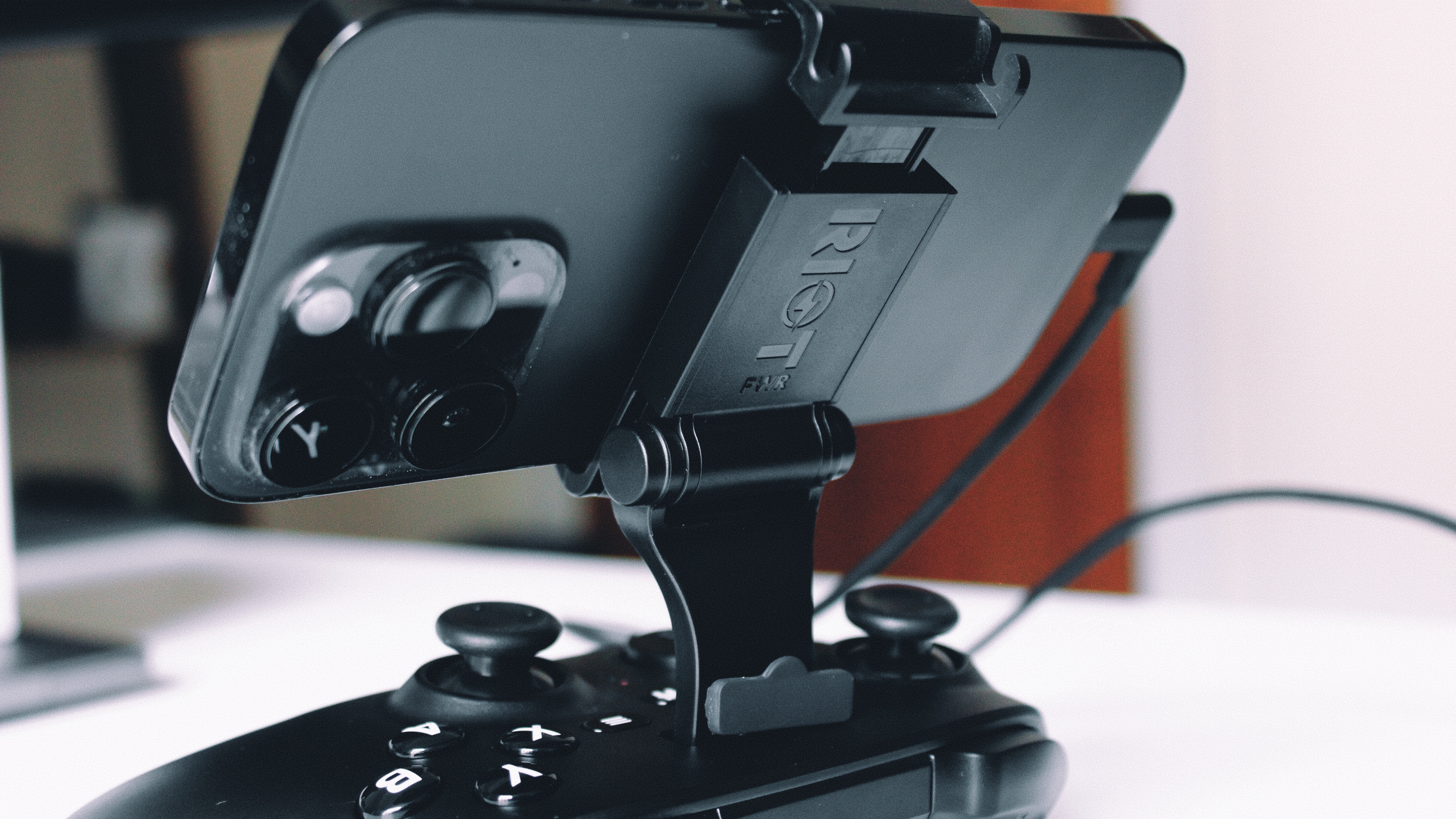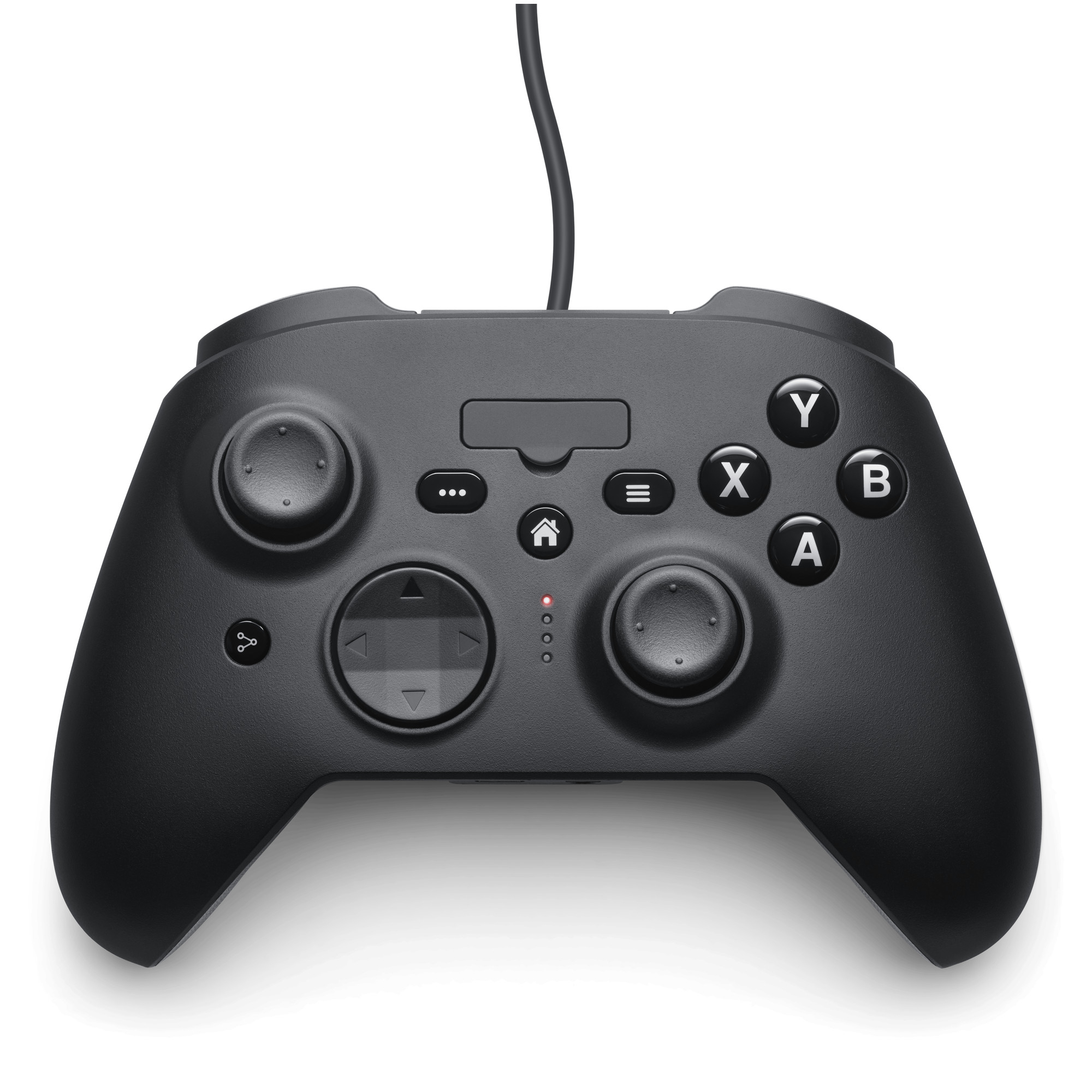iMore Verdict
The RiotPWR Cloud Gaming iOS Controller is an imperfect but well-rounded solution to gaming on your iPhone and iPad, and the only solution for those who want to do both.
Pros
- +
Low latency and battery use
- +
Works with Lighting and USB-C
- +
Nifty features including passthrough
Cons
- -
Lacks premium feel
- -
The cable is way too long
- -
Left thumb bumps against your iPhone
You can always trust iMore.
Gaming on an iPhone for most is a vertical wonderland of taps and swipes as you sit on the bus or pass time on the toilet. However, the power of iPhone gaming, and in particular cloud gaming, has never been stronger. To that end, we’ve seen a massive rise in the number of people using their iPhones as portals to Xbox Cloud Gaming, landscape Apple Arcade titles, and more.
Controller gaming on iPhone is all the rage right now, and there are plenty of solutions. Do you buy a PlayStation or Xbox controller, and wirelessly game using a stand or a mount? Or do you buy a Nintendo Switch-esque iPhone or iPad attachment like the Backbone or the Razer Kishi? There are pros and cons to both, but a new player has entered the fray that promises to solve some of the quirks of both in relatively affordable style.
The RiotPWR Cloud Gaming Controller isn’t perfect, but it provides a host of excellent features for those who want a landscape, controller-powered iPhone gaming experience. I’ve had the chance to test it out recently, and despite a couple of drawbacks, I’m impressed. Also impressed is Apple, which has seen fit to sell the RiotPWR on its website and in its stores. This is a prestigious honor and makes the RiotPWR worthy of your attention. Let’s find out if it also deserves your hard-earned cash.
RiotPWR Cloud Gaming iOS Controller: Price and availability
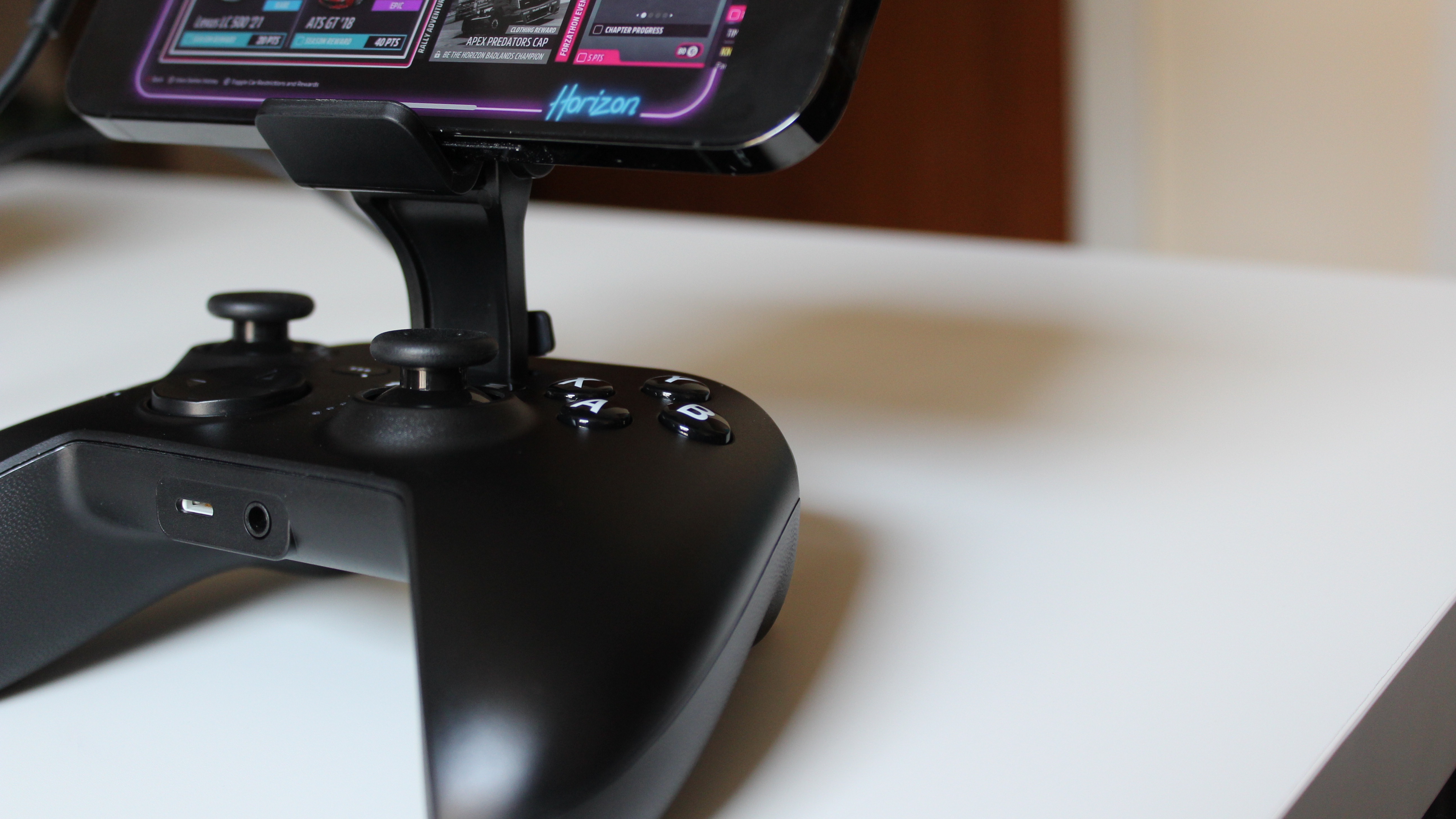
The RiotPWR Cloud Gaming Controller, as mentioned, can be bought from Apple. It’s available at Apple.com and in Apple Stores, costing $69.95 in the U.S. or £79.95 in the UK. As far as I can tell, it’s currently exclusive to the Apple store, as this specific version isn’t listed on either RiotPWR’s website or Amazon. You can, however, buy RiotPWR’s Xbox Edition of the controller through both of these avenues, it's slightly cheaper but still boasts the ‘Made for iPhone’ certification and some of the same features.
RiotPWR Cloud Gaming iOS Controller: What I like
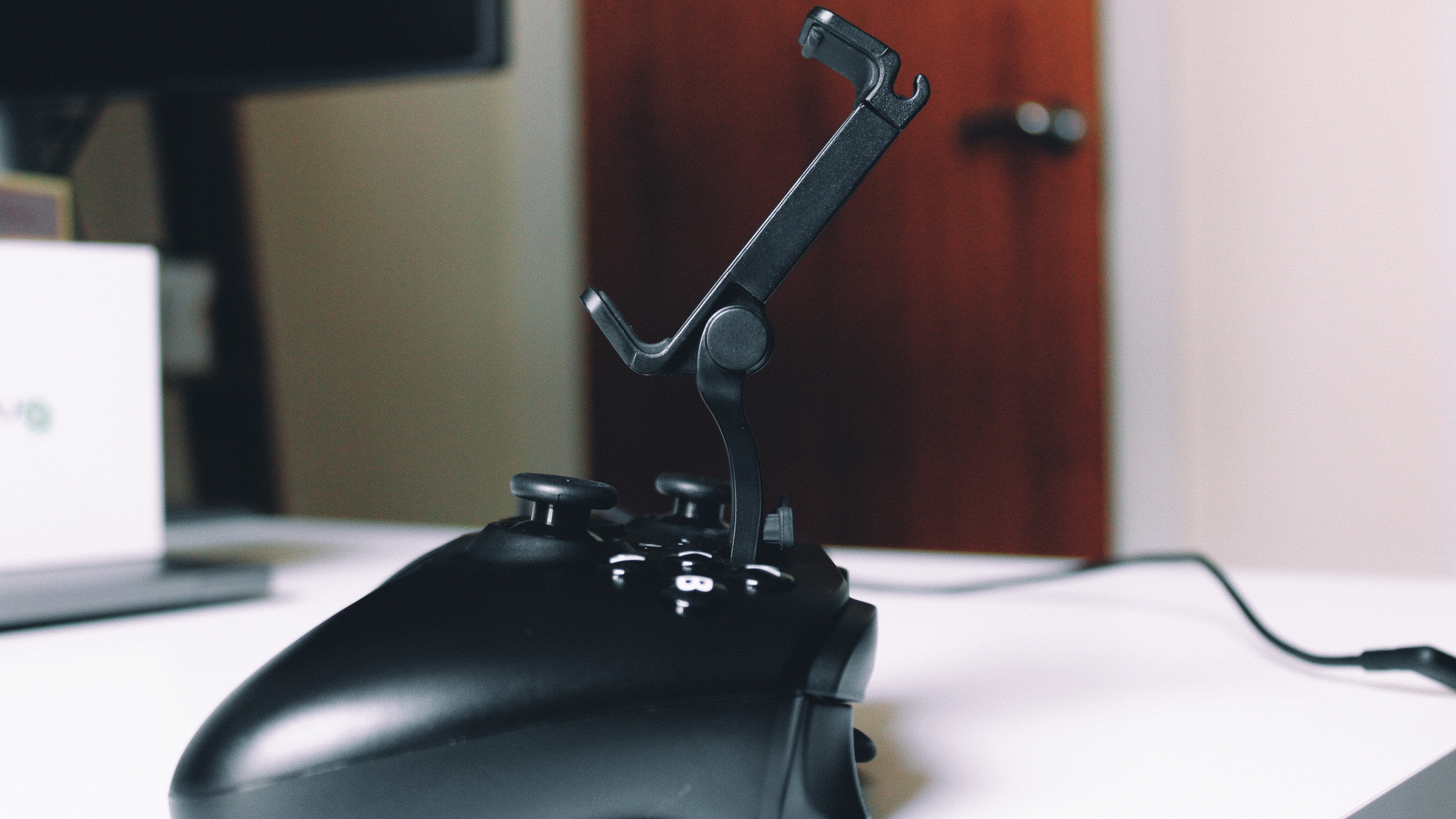
There’s a lot to like about the RiotPWR Cloud Gaming Controller. Out of the box, the controller is surprisingly light. It is noticeably lighter than a regular Xbox controller and my Razer Wolverine, in part thanks to a design that does feel more plasticky than the other controllers I own. However, given you’ll largely be using the RiotPWR with your iPhone mounted on top of it, this weight-saving is vital to keeping hand and wrist fatigue down when you’re gaming on the go. I was pleasantly surprised by how lightweight the controller was in hand even with my iPhone docked and mounted.
The RiotPWR Cloud Gaming Controller looks almost identical to an Xbox controller in terms of layout and buttons. There are two triggers, two bumpers, two sticks in the customary offset Xbox layout, an eight-direction D-pad, ABXY buttons, and three central buttons for Option, Home, and Menu. There’s also a Share button that can be used for taking screenshots whilst you’re playing.
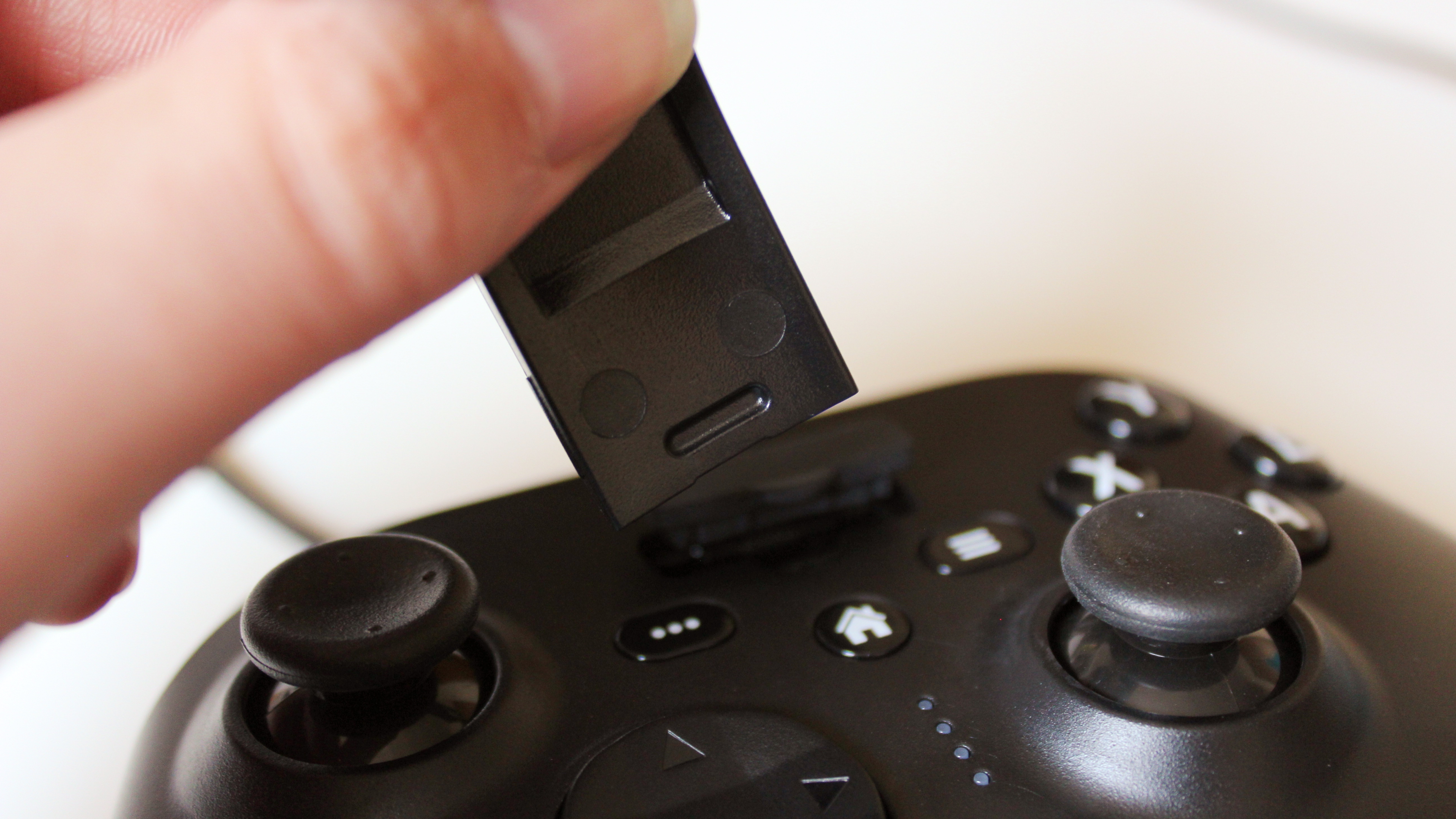
The center of the controller also houses a mount, covered by a rubber cap, which hides the slot you use to insert the iPhone stand in with ease. The mount affixes to the controller with a very satisfying click and can’t be removed again without a decent amount of force, so there are no concerns about the mount coming loose or detaching during play. Your phone is mounted using the adjustable bracket, which is very sturdy and holds your phone tightly in place. This also means you can use any size of iPhone in the mount.
Other awesome features the RiotPWR Cloud Gaming Controller boasts include charging passthrough, so you can play along while charging your iPhone through a normal charger, this is perfect for longer sessions where you might need some extra juice, although given the controller itself is wired, rather than wireless, it does start to get a bit cable intensive.
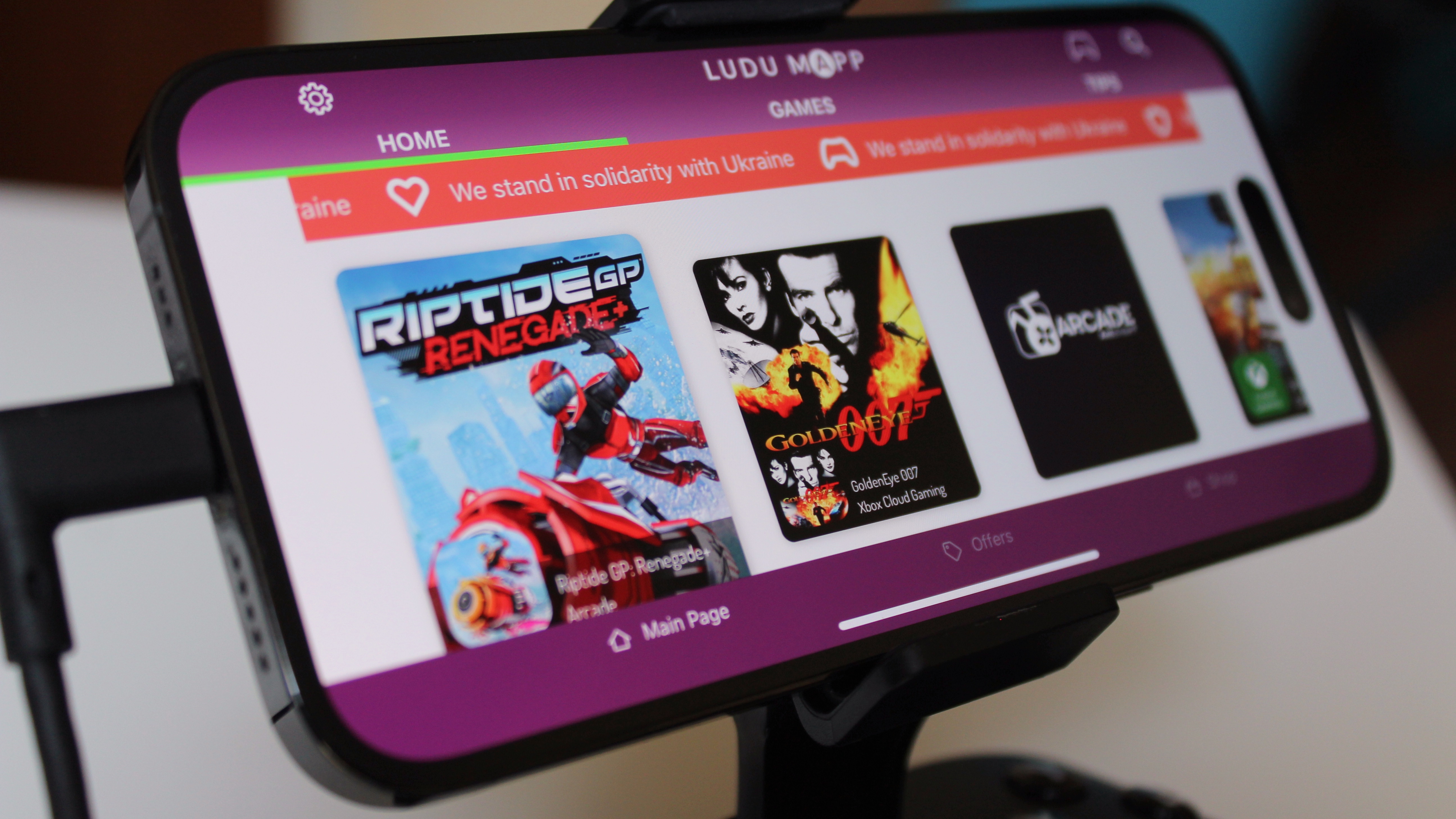
The Lightning port on the controller for passthrough is complemented by a headphone jack and an onboard DAC, which means you can game using wired, as well as wireless headphones, which is a nice touch.
Another feature I was impressed by was the Hall effect triggers. If you don’t know, Hall effect sensors use magnets rather than physically touching components to detect inputs. This means they are immune to stick drift and have less of a dead zone than regular triggers. Sadly, this isn’t extended to any of the other input controls, which are all either digital or analog, but still, it’s a nice touch, but the triggers won’t feel any different to use compared to a standard controller.
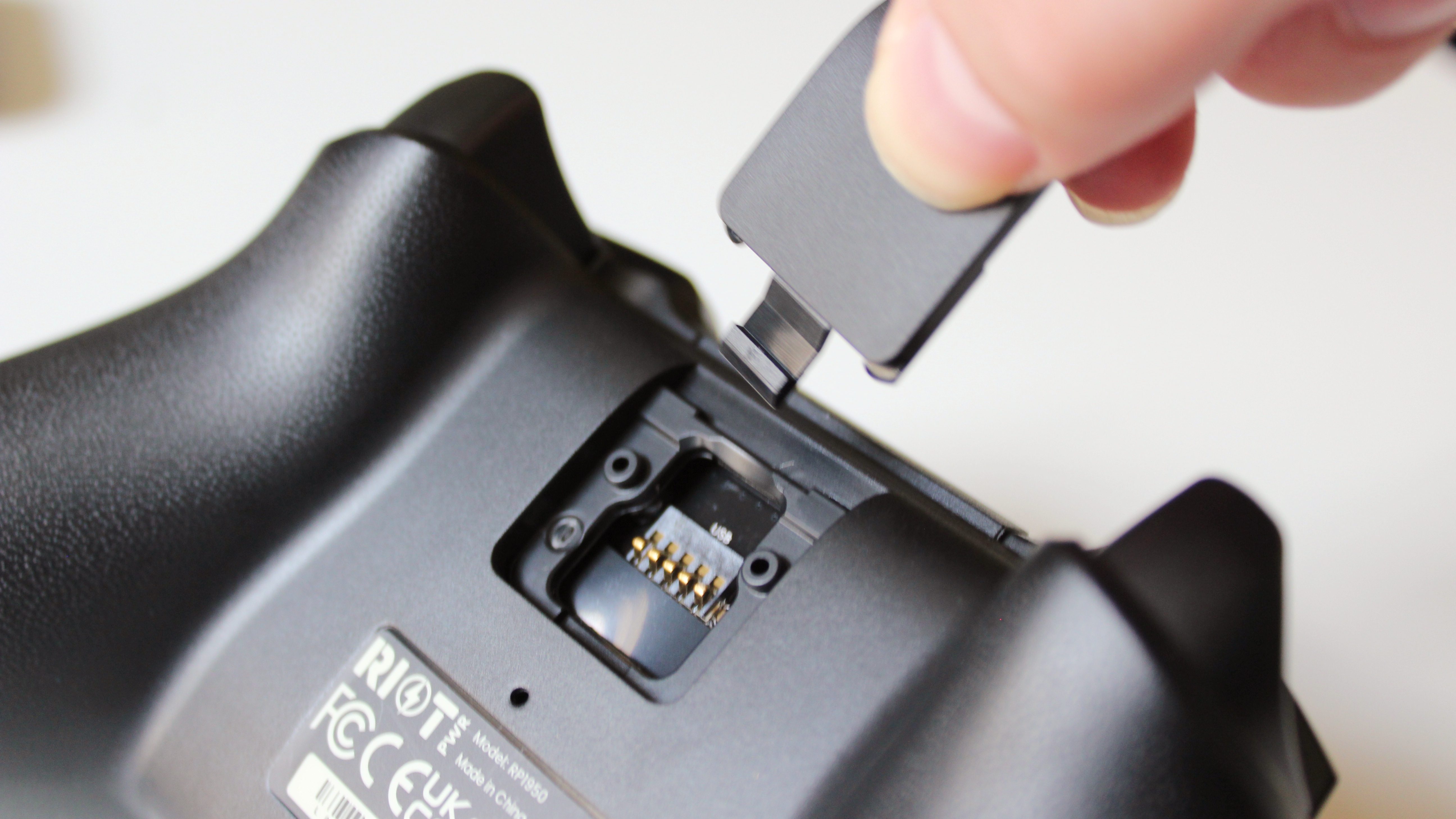
The main selling point of the RiotPWR Cloud Gaming Controller is that it uses wired connectivity. This might sound counterintuitive in the age of wireless everything that we live in, however, there are some real benefits to using wired connectivity here. Firstly, there’s very little input lag. Input lag is just as important in mobile gaming as it is on PC or console. Notably, not having input lag is great when it comes to services like Xbox Cloud Gaming, where you’re already dealing with a certain level of lag from the cloud.
A wireless controller might be slicker, but if you’re using a mount then there’s very little benefit to wireless connectivity given the proximity of the phone to the controller, so you might as well have a wire that reduces input lag. The other major benefit of the cable is reduced battery usage. By not having a wireless connection, the RiotPWR uses less juice from your iPhone, meaning you aren’t draining your iPhone’s battery using Bluetooth. You are, however, using your phone to power the charger because there’s no battery, so this is a trade-off.
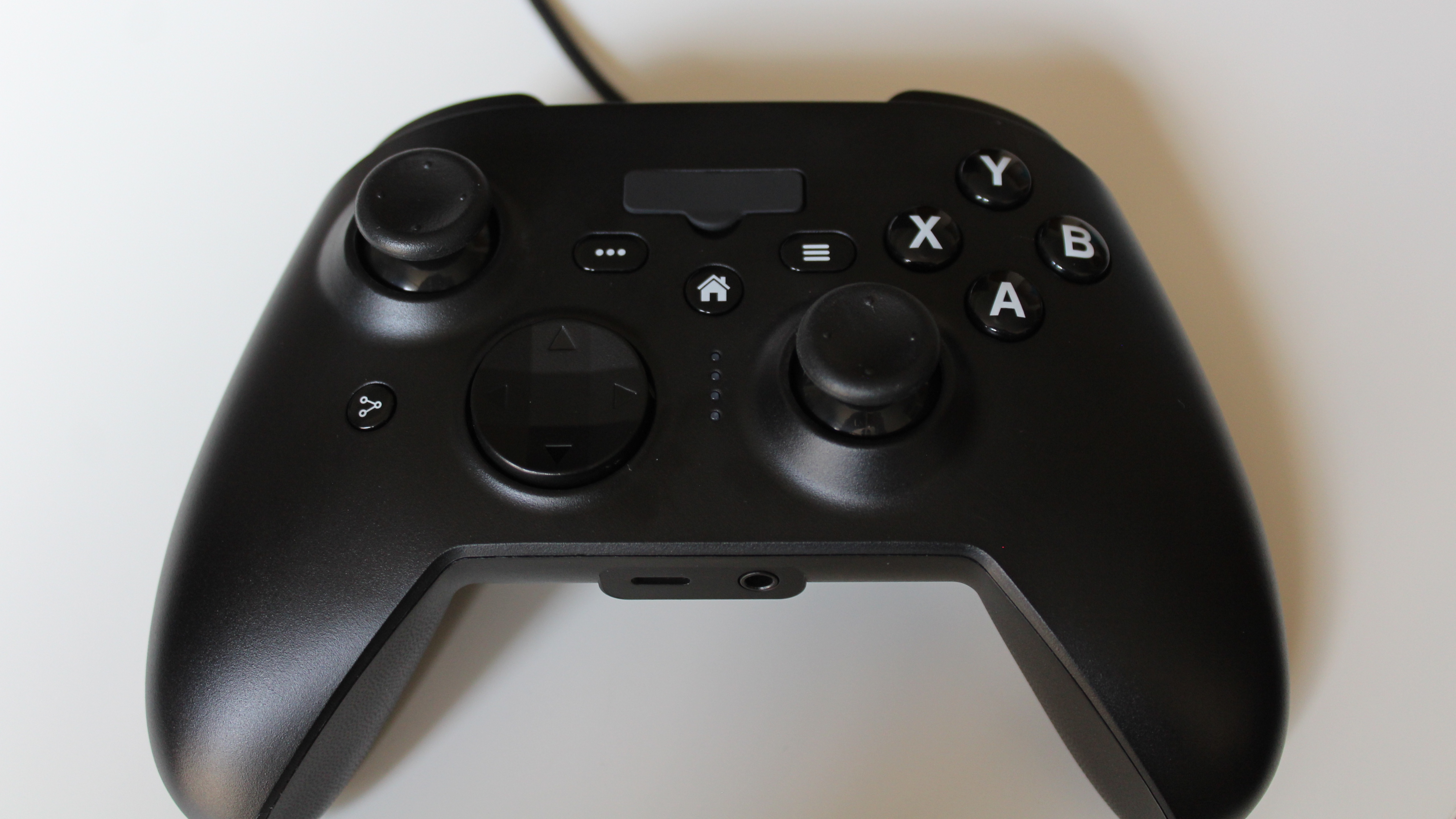
Wired connectivity does have one drawback, in that it limits compatibility. To this end, the RiotPWR comes with two cables, one Lightning and one USB-C, so you can game on either iPhone or iPad by simply swapping to the requisite cable as and when the mood takes you. The cable is detached from underneath the controller where you might expect to find the battery pack of a wireless controller, and the connection is flush and sturdy. What’s also notable is that this dual connectivity extends the RiotPWR’s compatibility to the upcoming iPhone 15, expected to feature USB-C.
The RiotPWR also comes with an accompanying app called Ludu Mapp. The app is great for bringing controller-based gaming all under one roof. Unfortunately, there’s no native support for anything like Xbox Cloud Gaming or Apple Arcade. However, it does at least help provide a convenient place to find all the best games you can play with a controller on your iPhone. The app is a little buggy, and leaving the app to download games or open up Xbox Cloud Gaming can be frustrating, especially when you’re changing orientation from landscape to portrait all the time. Overall though, the app is cool and also features a shop, tips, a testing suite, and even guides and walkthroughs for some games. There are also categories for different genres, as well as a dedicated Apple Arcade and Xbox Cloud Gaming section. You don’t need the app if you don’t want to use it, but I’d recommend it. It has a user interface broadly similar to the Backbone app but doesn’t let you download or play games within the app itself.
RiotPWR Cloud Gaming iOS Controller: What I don’t like
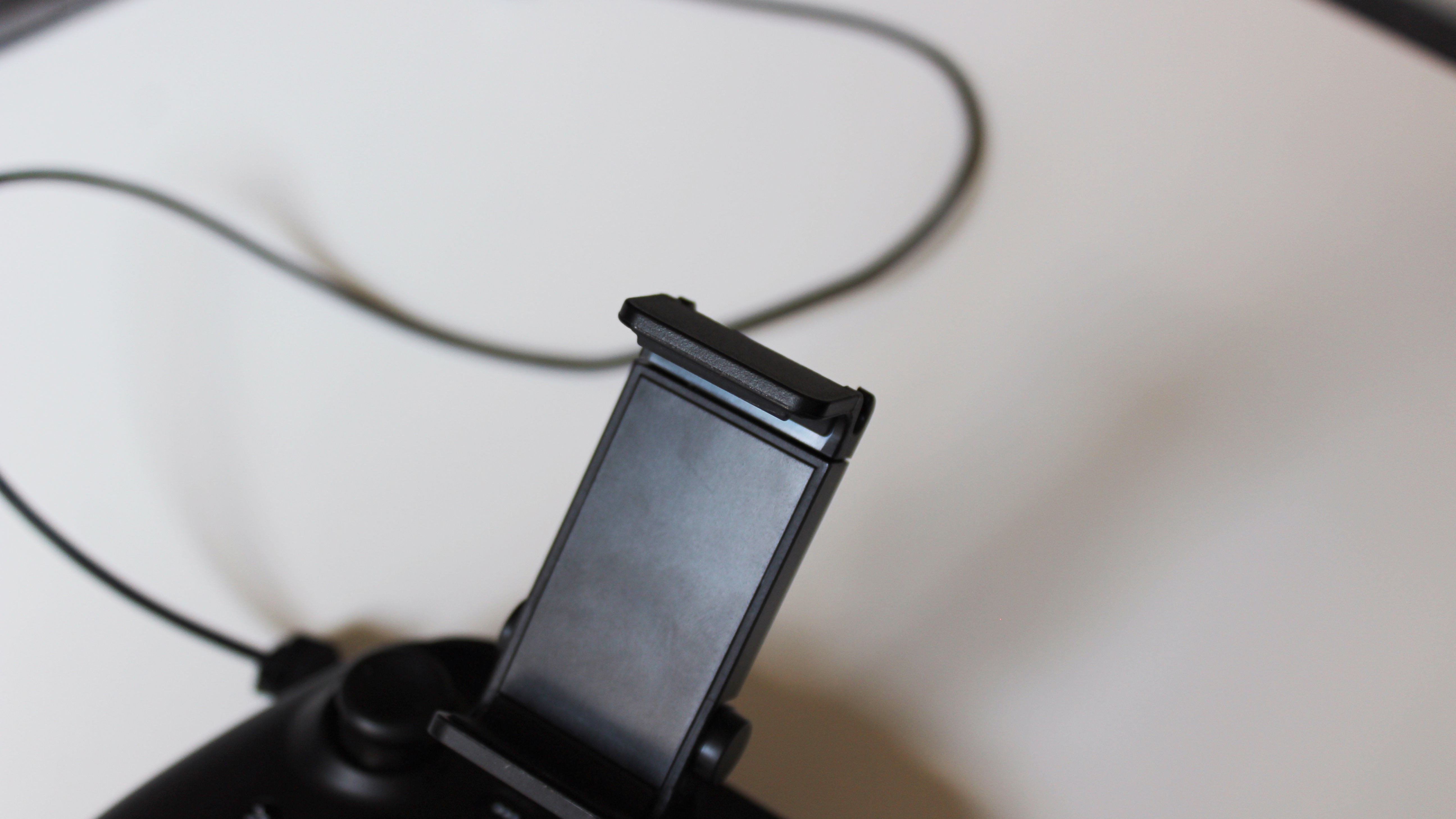
There are a couple of quirks and things I don’t like about the RiotPWR. Most notably, the Lightning cable to attach it to an iPhone is way too long. The cable is 60 cm / 24 in. long. This makes sense for the USB-C iPad cable where you need the length, however, the iPhone cable could be a least half the length if not shorter. There’s an awful lot of slack and I’d worry about accidentally wrapping that cable around an armrest or getting a child or medium-sized dog caught in it if I was out and about. As noted above, you’ll be using the USB-C cable for iPhone 15, which will extend this problem to phone as well as tablet gaming. The nifty cable swapping mechanism does require a pin to detach the cable. This is important to stop it from happening accidentally mid-game, but it is a tad annoying.
Another design quirk is that I found my left thumb relentlessly bumped up against my iPhone when the mount is set to its most upright position. This isn’t quite the optimal angle for gaming, so I’ll let it slide, but if you have larger hands like me it’s definitely something to consider.
I think the biggest drawback of the RiotPWR is the generally cheap feeling you get from the buttons and the material of the controller overall. As I’ve noted, this is important for keeping the weight down (it only weighs 280 grams), but anyone who has used a more premium controller, for instance, the Xbox Series X controller, will immediately notice the gap in quality. Each click and press on the ABXY and D-pad sound ever so slightly hollow and the buttons aren’t quite as satisfying to press as I’d like. This is most noticeable when you press the bumpers.
Overall, however, I think the RiotPWR does well as a games controller for those who need an iPhone-specific mobile solution. While I think its worth comparing the controller to console offerings as a point of reference, it’s not a totally fair fight given the RiotPWR offers mobile users so much more in the way of iPhone-specific features that you won’t get simply by connecting your Dualshock to your iPhone.
RiotPWR Cloud Gaming iOS Controller: Competition
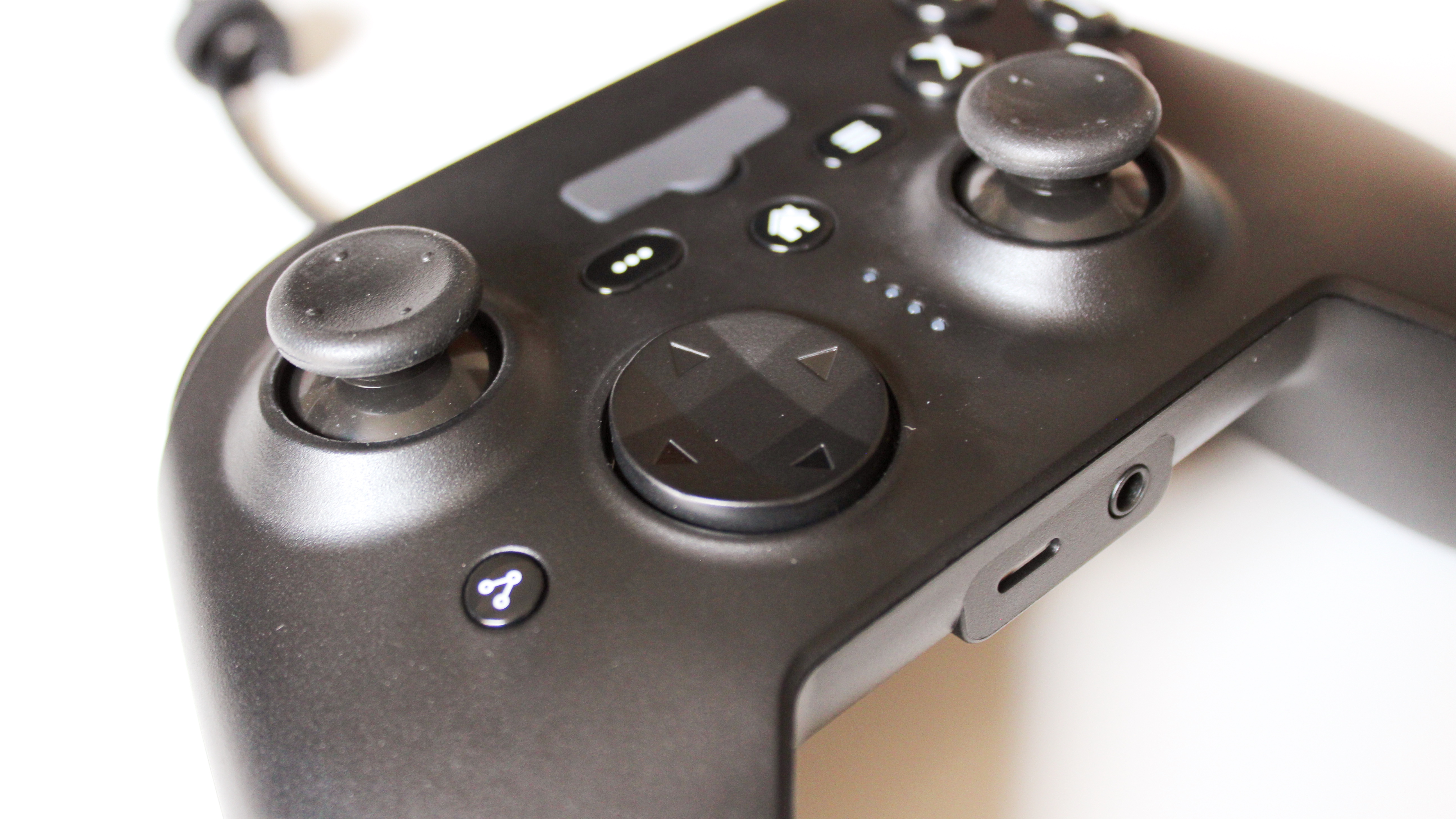
As the world’s only “Lightning-connected, full-sized, mobile game controller available today” the RiotPWR Cloud Gaming Controller does not have a lot of competition. But there are some alternatives. If wireless connectivity is important to you, you might want to consider either the Xbox Wireless Controller or Sony’s DualSense PS5 Controller (you may even already own one). You can pair either with a separate iPhone controller mount to create the landscape gaming experience the RiotPWR offers without some of the bells and whistles.
Another alternative, and my preferred way to play, would be to acquire a device that molds your iPhone to a Nintendo Switch-style gaming experience. Notable entrants include the Gamevice Flex, which is our top pick for best iPhone Game Controllers, or the Razer Kishi for iPhone, as well as the Backbone. The Razer Kishi and Gamevice Flex are both cheaper alternatives to the RiotPWR, however, the Backbone is more expensive, (but offers a more comprehensive mobile gaming experience through the app and greater game support.)
RiotPWR Cloud Gaming iOS Controller: Should you buy it
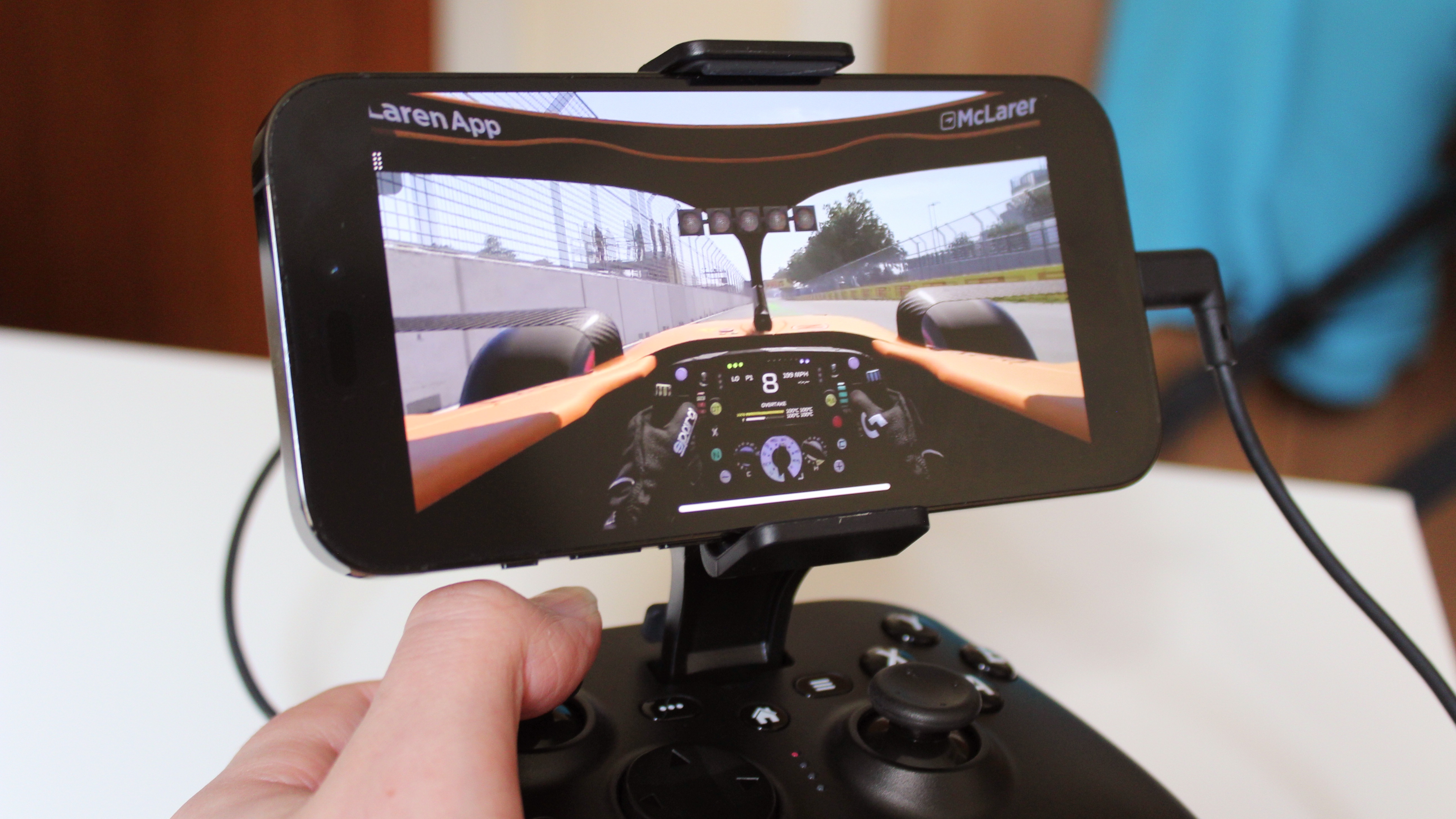
You should buy this if…
- You want a controller that will work on iPhone and iPad
- You want a controller that won’t chew up your battery life
- You prefer the Xbox-style controller layout
You shouldn’t buy this if…
- You don’t have an iPhone
- You insist on a wireless controller
- You want to game on iPhone without using a mounted controller
RiotPWR Cloud Gaming iOS Controller: Verdict
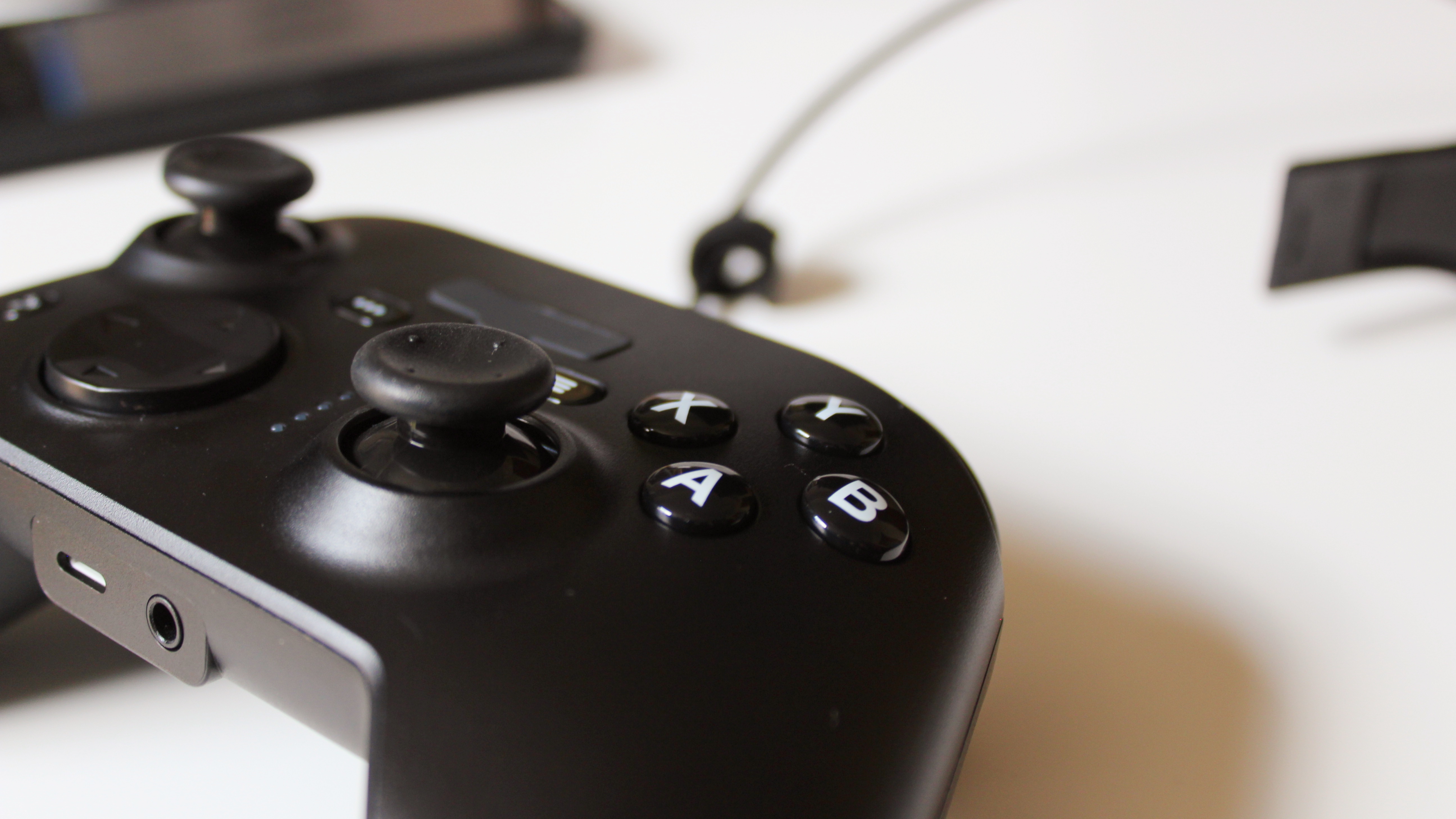
The RiotPWR is definitely a cool solution to the challenge of gaming using a controller on an iPhone. Despite the slightly cheaper feel it’s a solid controller overall, and benefits from lots of features including passthrough charging, audio connectivity, and low-latency input thanks to its wired input. Hardcore gamers will notice the cheaper feel of some of the buttons and the exterior finish, and that long cable seems like a real misstep. Ultimately though I think anyone who picks one of these up from Apple’s website or the Apple store will be very pleased overall with their purchase.

Stephen Warwick has written about Apple for five years at iMore and previously elsewhere. He covers all of iMore's latest breaking news regarding all of Apple's products and services, both hardware and software. Stephen has interviewed industry experts in a range of fields including finance, litigation, security, and more. He also specializes in curating and reviewing audio hardware and has experience beyond journalism in sound engineering, production, and design. Before becoming a writer Stephen studied Ancient History at University and also worked at Apple for more than two years. Stephen is also a host on the iMore show, a weekly podcast recorded live that discusses the latest in breaking Apple news, as well as featuring fun trivia about all things Apple. Follow him on Twitter @stephenwarwick9
